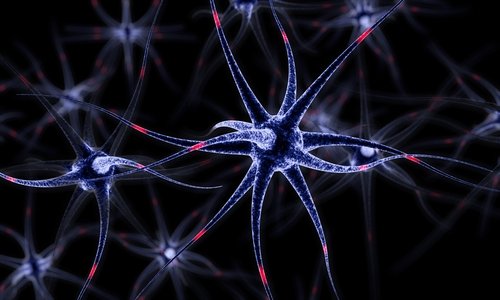Brain Neurons Disconnect from Each Other in Process Called Neuritosis, Mouse Study of Huntington’s Reveals
Written by |

The progressive death of brain nerve cells observed in Huntington’s disease is likely preceded by the retraction of their neurites — long projections that establish connections throughout the brain, a mouse study reveals.
Understanding this mechanism, which is exacerbated during aging, stress, and neurodegenerative diseases, may open new avenues for the development of future therapies.
The research article, “Mitochondria modulate programmed neuritic retraction,” was published in the Proceedings of the National Academy of Sciences of the United States of America.
Neurites are the projections that protrude from the cell body of a neuron. These can become either axons or dendrites, both of which are responsible for sending electrical and chemical messages to either other neurons or certain muscles and glands in the body.
Retraction of neurites in the absence of apparent neuronal death occurs during normal aging and early in neurodegenerative disorders, but the mechanisms responsible for this retraction are unknown.
It is known, however, that two processes that play key roles in neuronal cell death have been implicated in neuritic retraction: caspase activation and mitochondrial dysfunction. Caspases are a family of enzymes that play essential roles in programmed cell death and inflammation; mitochondria are cellular organelles that provide energy, and are known as cells’ “powerhouses.”
Therefore, researchers at the University of Pittsburgh School of Medicine sought to understand if and how these two processes — caspase activation and mitochondrial dysfunction — were involved in normal neuritosis. This could have important implications in the understanding and treatment of nervous system diseases related to aging, stress, and neurodegeneration.
To understand whether neuritosis plays a role in degenerative diseases, researchers used mice that were genetically modified to carry a mutant version of the human huntingtin protein — a hallmark of Huntington’s disease. Previous work from the same team showed that mutant huntingtin impedes mitochondrial protein transport, and that caspases are involved in the disease’s neurodegenerative process.
Using nerve cells from the mice, researchers found that progressive mitochondrial damage in neurites impaired the transportation of newly synthesized proteins to mitochondria within the neurites.
Researchers looked at individual neurites under microsope, and observed that this impairment made mitochondria more vulnerable to damage, by slowing the incorporation of new proteins that would maintain mitochondrial health and function.
“Their mitochondria, the cellular powerhouses, weren’t working as well at the neurite ends,” said Sergei Baranov, PhD, a staff scientist at the university.
When the researchers looked at neurons in the spinal cords of mice, they found the same phenomenon.
“Other researchers must have noticed this as well, but we were able to visualize it and suggest the potential cause as well as outcome,” Baranov noted.
What they observed was that mitochondrial vulnerability sets off a chain of events that results in the increased production of damaging molecules called reactive oxygen species, and localized activation of caspase in neurites. These events collectively lead to the retraction of nerve cell projections, a phenomenon researchers called neuritosis.
“Neuritosis is a process that hasn’t been recognized or described until now and could play a very important role in normal brain development, aging, and neurodegenerative disease,” the study’s senior author Robert Friedlander, MD, said in a press release.
“It’s quite intuitive, once we discovered how it works,” he added. “Neuronal projections are really long and the farther you are from the nucleus, which is the central factory, the harder it gets to repair and replenish the cellular machinery, making the ends more vulnerable to even small stresses.”
The mice in the study exhibited symptoms of Huntington’s disease, including accelerated neuronal death. The findings were similar to what the researchers had seen in mouse cells, albeit more pronounced: dysfunctional mitochondria, depleted mitochondrial numbers, activated caspases, and retracted neurites.
“It’s quite likely that neuritosis happens in nerve cells normally and doesn’t result in cell death, but in neurodegenerative diseases, there are higher levels of stress to the already vulnerable neurite ends, which could push neuritosis over the edge and lead to cells dying,” Friedlander said. “If we can somehow find a way to keep mitochondria at nerve ends healthy, it may be beneficial in treating neurodegenerative diseases.”





